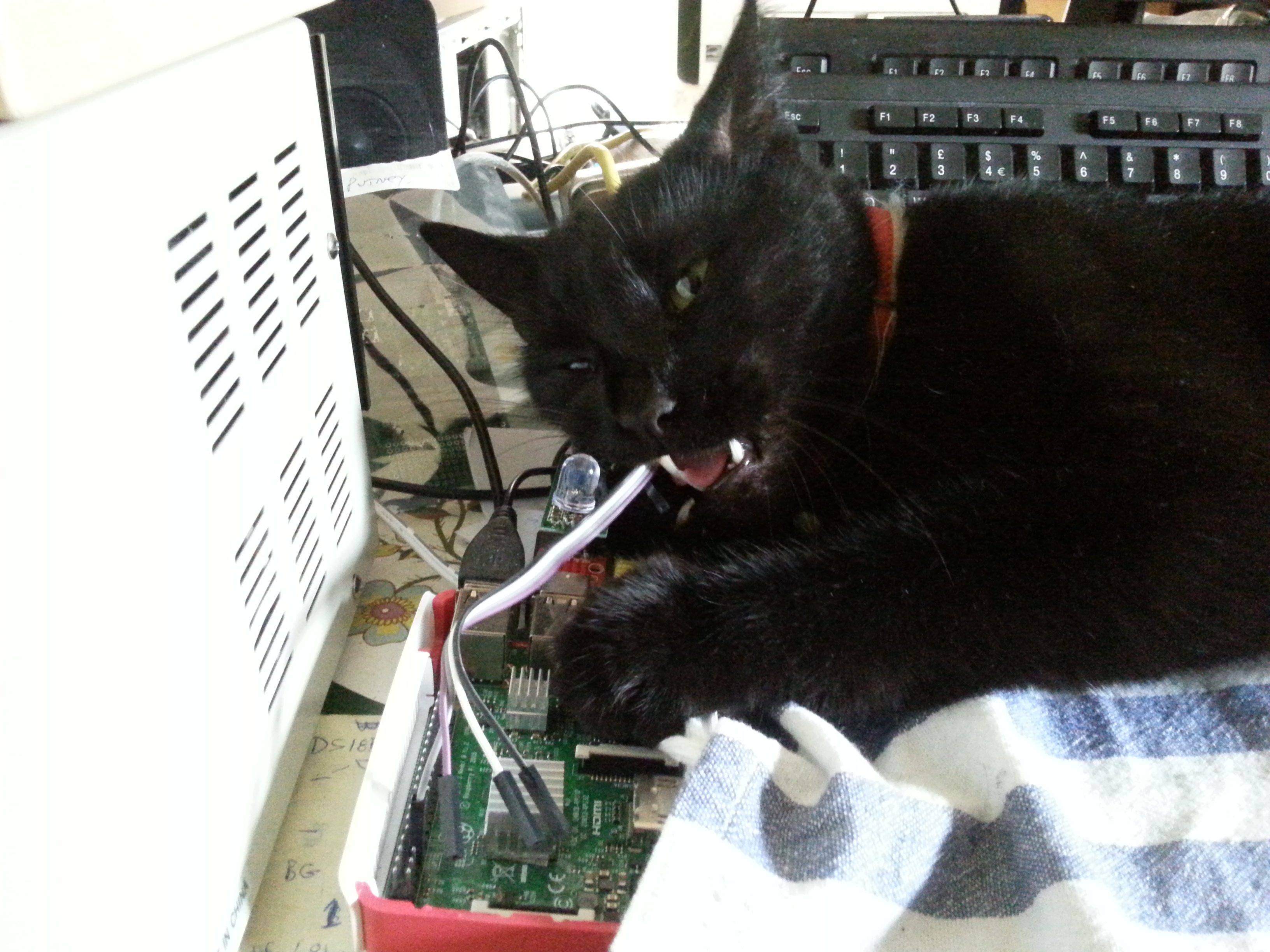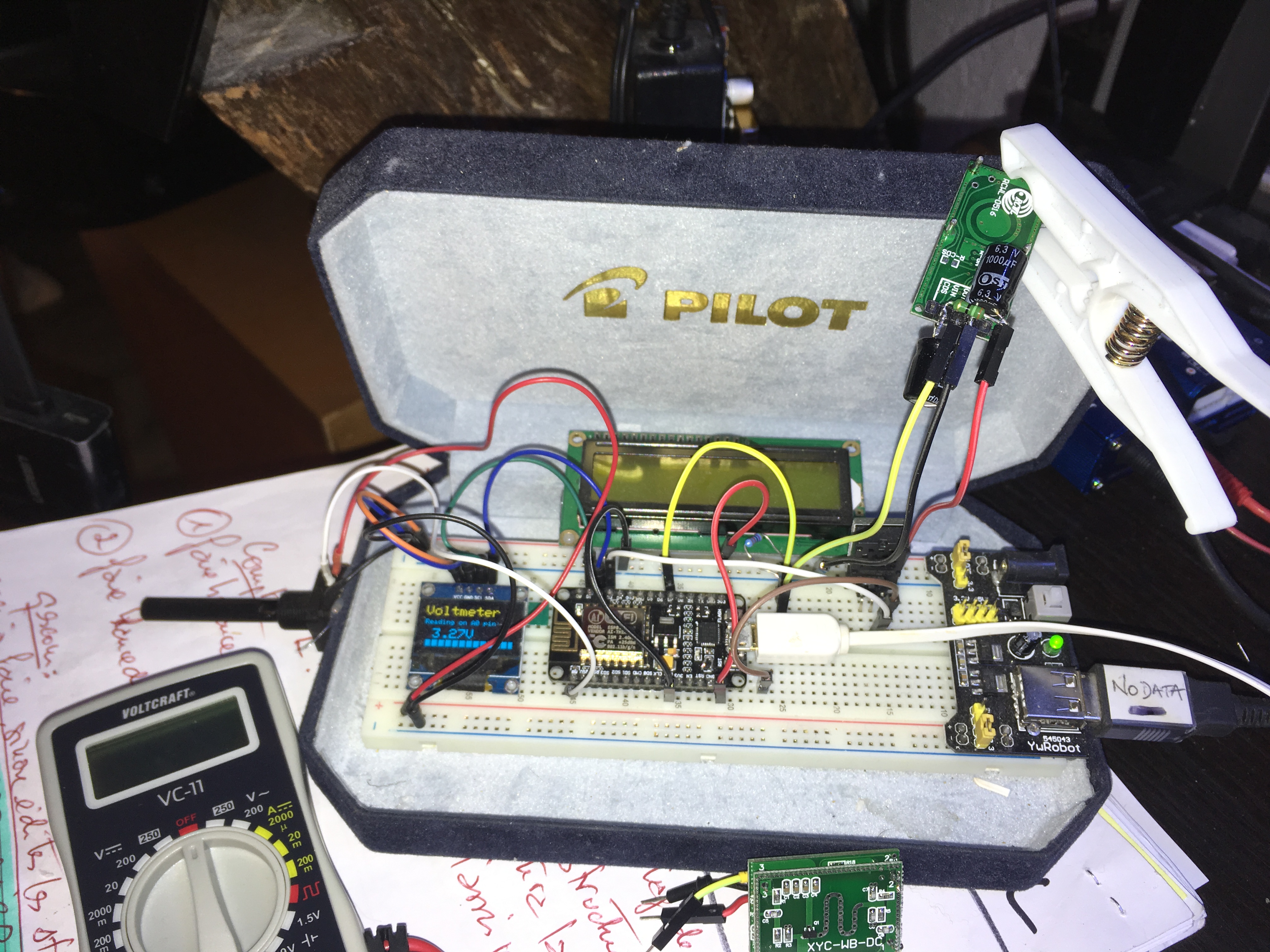I've been struggling for WEEKS with a miniature DIY motion detector device built with RCWL-0516 + ESP8266 + mini 5V P/S. It sometimes works flawlessly for hours then starts giving false triggers repetitively ... I even tried to get the radar sensor out of the casing in case it would work better when distant from the ESP, but to no avail :-( I think this sensor is definitely prone to interferences and not reliable enough to be used in a motion detector device in the long run. The only thing I haven't tried yet is to use a strong capacitor across the VCC input of the radar sensor, but I doubt it will help ...





 This is CAT5 chewing my wiring from the Cat Detector. The detector is powered by a 5v USB plug (red) and the RCWL is green. The 3.3 v Blue LED is directly wired to OUT and GND with no dropping resistor (current limited) and the output goes into the Raspberry Pi 3 GPIO. Notice only one wire attached as power and ground comes from the USB plug.
This is CAT5 chewing my wiring from the Cat Detector. The detector is powered by a 5v USB plug (red) and the RCWL is green. The 3.3 v Blue LED is directly wired to OUT and GND with no dropping resistor (current limited) and the output goes into the Raspberry Pi 3 GPIO. Notice only one wire attached as power and ground comes from the USB plug. This is node-RED running in the whitebox. The Pi Zero W is headless so I remotely log in with 192.168.1.18:1880 from any tablet or desktop browser and edit the node-RED gui. Log files can be viewed by secure shell in any terminal, phone or tablet - ssh pi@192.168.1.18
This is node-RED running in the whitebox. The Pi Zero W is headless so I remotely log in with 192.168.1.18:1880 from any tablet or desktop browser and edit the node-RED gui. Log files can be viewed by secure shell in any terminal, phone or tablet - ssh pi@192.168.1.18 



I used this sensor with a esp8266 and i have a lot of false triggers. Seems to be strongly affect by the wireless network , in general , by strong electromagnetic fields . I tried to place him at a considerable distance from esp8266 and I used a lot of decoupling capacitors. Sure that the false switching operations were far fewer . I would like to know if anyone met this problem and how to solve it . If I mount a metalic shield on the back of the sensor, may this affect its detection properties ? Thanks .